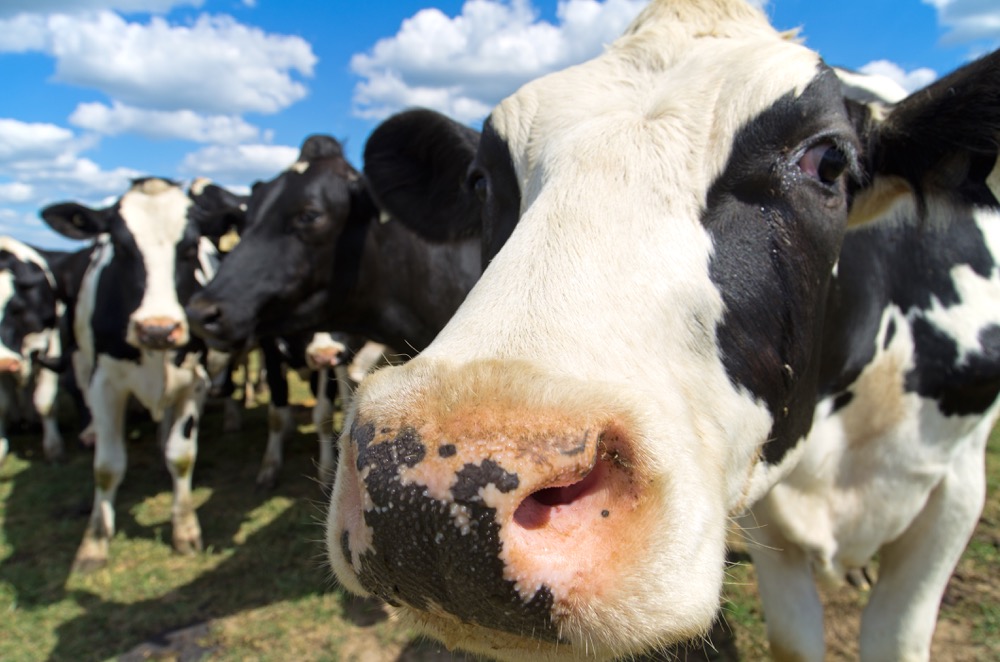Have you ever felt betrayed when you bought a food product?
I am fascinated by brand claims and food sources. One day I simply emptied the nearest cupboard to see where the food came from and what was in the manufactured products that now were scattered on the counter.
The pure Atlantic Sea Salt I bought in Quebec was actually a product of South Africa. Although the label claimed the salt to be pure, the small print read “may contain wheat, mustard, sesame, soya and sulphur dioxide.”
Read Also

Guarding against misinformation: Do you believe in house hippos?
Misinformation and disinformation run rampant in today’s digital age. Farmers must be wary of the digital dangers and know how to keep themselves safe.
The “fresh water shrimp” bore a Canadian label that also stated it was a “product of China” and the Italian sauce gave no indication of using Italian tomatoes. The sauce could accompany the “top brand” pasta now sitting on the counter. What made it a “top brand” was unclear as the package lacked information on where the ingredients were from and/or where the pasta was manufactured.
Ingredients are big business in the manufacturing of food.
A list of the hundreds of food and non-food ingredients in any final product could include yeast, skim milk powder, adhesives, sugars, spices, oils, scents, solidifiers or colouring. Take that “top brand” Italian pasta, for example, it may or may not be made from Prairie wheat. There is no way of knowing.
Buying local chicken is easy but a chicken sausage, regardless of where it is made, could contain ingredients from anywhere in the world.
- More with Brenda Schoepp: It’s harder for women to put food on table when they’re paid less
When we eat food imported from other countries, there is no legal requirement to disclose the origin of the ingredients. The Indian korma sauce from the cupboard was manufactured in the U.K. without reference to the origin of the ingredients while my mayonnaise stated “made in Canada with domestic and imported ingredients.” (I will assume canola is the main domestic ingredient!) Meanwhile the long list of chemicals on the whipped cream alternative are simply identified as being imported.
Is this normal?
The answer to that question is yes and more common than we know.
The first issue is the fact that the food supply chain is driven by price, and manufacturers will go to the cheapest ingredients. As for salt (a major food ingredient), Canada has the longest coastline in the world and therefore has access to massive amounts of salt from the sea. Yet it remains less expensive to bring salt by boat from other countries than it is to manufacture our own sea salt. A current lack of domestic processing leaves the shelf space open for imported product.
As we have exceptional quality and cleanliness in the food system in Canada, it makes sense to manufacture foods here with known ingredients. Some are not grown here (such as cinnamon or walnuts) but for others, it is a matter of cost. Canada imported just under 50,000 tonnes of eggs last year for use as ingredients. Often key ingredients are exported to the U.S., only to come back as a manufactured product, such as is the case for Canadian oats.
A clearly Canadian label is only possible in part by increasing our value adding, further processing, packaging and manufacturing capacity in a way that is creative and cost sensitive here at home.
Ironically, concern over the carbon footprint of food just might provide the answer.
Take Ontario carrots as an example. As the cost of shipping Ontario carrots to the U.S. to be scrubbed, packaged and returned becomes greater, there is an opportunity to revisit the advantage of further processing with domestic ingredients at home. The more we do here, the less reliance we have on outside systems (that may not have the same quality control) and the less energy we burn in the process.
As the combination of agriculture and agri-food manufacturing employs one in four Canadians and makes a greater contribution to the GDP than oil and gas, I think it’s time to enhance the food industry with made-in-Canada products using Canadian ingredients.
Why is this important for farmers?
At every juncture in agriculture, we hear the term ‘price-taker’ which is rather a demoralizing way to label food producers. This cannot change without more domestic value adding to commodities through regional investment in manufacturing.
The products from our farms need to be manufactured into foods with homegrown ingredients. That is the only way to build value in the food system and get Product of Canada and Made in Canada on more labels.
As a consumer I would like this reassurance and will be asking for it in the fresh, frozen, refrigerated and dry package aisles. And just as importantly, I want retailers to give local and domestic companies shelf space so they are part of a Made in Canada feature. Let consumers vote with their buying dollars.
No one wants to experience the feeling of label betrayal or confusion. Current consumer engagement with farmers is at an unprecedented high and now is the time to join together by asking for Canadian food and food products on shelves and in online stores.
















